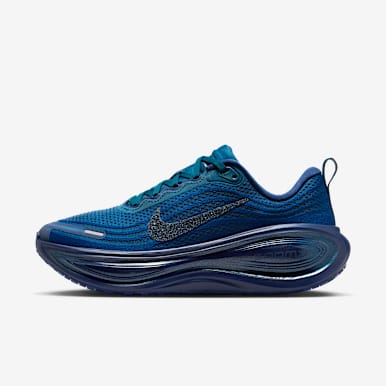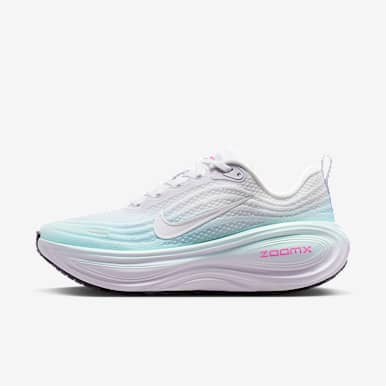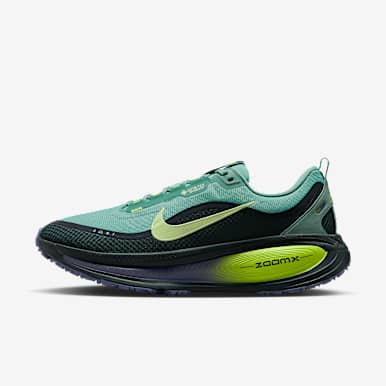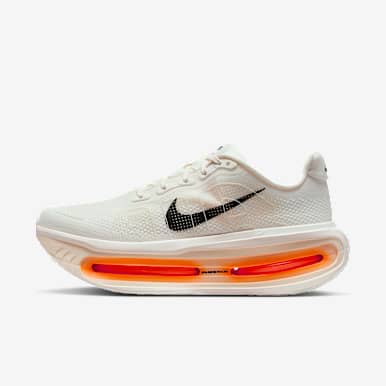What's the Difference Between Running and Jogging?
Sport & Activity
Find out how the two are different and why each can play a role in developing comprehensive fitness.

Every day, millions of people lace up their running shoes and head out the door to get in their miles. But when they pound the pavement, are they running or jogging? And is one better for your overall health?
The Difference Between Running and Jogging
While the terms "running" and "jogging" don't have official definitions—you won't see them outlined by the United States Track and Field (USATF), the governing body for running—there are some factors to determine if you're heading out for a run or a jog.
1.Speed
For many people, jogging is simply a slower version of running. Many experts say that an average jogging pace ranges between 4 to 6 miles per hour (mph), while running is defined by a pace that exceeds 6 mph, or faster than a 10-minute mile. Though bear in mind that the difference between jogging and running varies by individual.
You may even switch between jogging and running paces during the same workout. This is especially the case if you're engaging in speed intervals or a Tempo Run, which often require warm-ups and recovery jogs between sets. As Nike Running Global Head Coach, Chris Bennett, advises in several of his Audio-Guided Runs on the Nike Run Club App, it's imperative that you take your warm-up seriously.
"So if you are pushing, if you are straining, if you are running hard right now, stop! Pushing, straining, running hard on a warm-up—all of those things hinder you, they don't help you", he says.
2.Intensity
Regardless of how fast you are, it's likely that you alternate between jogging and running paces from time to time, especially during more intense workouts. For example, in between reps and sets of fast 200-metre interval sprints, your recovery jogs will likely be even slower than your warm-up pace. Though, if you're returning from injury or just dipping your toe into the running world, you might want to start by walking and jogging before tapping into faster paces.
There's a host of benefits of incorporating Fartlek or speed play into your routine. In a 2015 review of studies published in Sports Medicine, it was determined that engaging in high-intensity interval training can have positive impacts on your VO2Max, or how efficiently your body creates energy from oxygen. During a Fartlek run, faster and slower paces are alternated, which tap into the variety of energy systems and can result in a decreased resting heart rate over time.
3.Intention
Depending on your goals, you may want to keep it low-key to let your legs recover after logging your weekly long run, or maybe you need to blow off some stress after a busy day and dial up the intensity—both provide benefits when done thoughtfully. If you are hoping to boost your effort, be sure to slowly crank it up to avoid burning out, overtraining or possible overuse injuries.
RELATED: How Exactly Does Exercise Reduce Stress?
Whether you're training for a marathon or eager to enjoy getting some movement during your day, both jogging and running offer huge mental and physical benefits. Not to mention, both can be incorporated into a range of programmes to support a variety of goals. And remember, slow recovery runs are just as important as speed-orientated ones.
"A properly done recovery run helps you recover physically, mentally, mindfully and emotionally", says Bennett.
The Health Benefits of Running
From reduced cancer risk to better stress management, running offers a range of benefits and perks. But then, there are also the intangibles: the feeling of finishing a hard workout, the friends made in a community running crew. This and more below.
According to a study published in Medicine & Science in Sports & Exercises, study participants who ran at faster speeds tended to use less medication for hypertension, high cholesterol and diabetes. Reviewing the performance and medical needs of more than 50,000 male and female runners, researchers found that men who ran seven minutes per mile and faster used medication less than those who ran a 10-minute mile pace or slower. Similarly, they discovered that women who ran eight minutes per mile and faster used less medication than those who ran an 11-minute mile and slower.
What's more, running may help lower the risk of cancer—and have positive impacts on the cancer experience, according to a review of nearly 170 observational epidemiological studies published in The Journal of Nutrition. The massive analysis confirmed that physical activity was convincing for decreasing the risk for colon and breast cancers, and probable for prostate cancers.
"Evidence is increasing that exercise also influences other aspects of the cancer experience", the review said. "Including cancer detection, coping, rehabilitation and survival after diagnosis".
Beyond the physical benefits of running, research also suggests that it may be beneficial in reducing chronic stress. In a 2018 study published by Neurobiology of Learning and Memory that analysed the impact of exercise on mice, it was found that mice who were stressed and exercised demonstrated better performance and memory than sedentary counterparts.
The Health Benefits of Jogging
Crushing a hard run can lead to a sense of major accomplishment. But don't disregard the benefits of jogging, either. Whether you're returning to running after an injury or just trying out the sport, jogging offers numerous health benefits beyond enjoying some movement and clearing out any mental cobwebs.
In fact, a 2015 study published in HHS Public Access reviewed the relationship between slow running and cardiovascular mortality risk in over 55,000 participants ranging in age from 18 to 100 years. The research found that running for even five to 10 minutes per day at speeds slower than 6 mph can substantially reduce the risk of death from the causes of cardiovascular disease.
Running vs. Jogging: Which Is Better?
Both running and jogging can provide health benefits, even just a mile a day. According to the U.S. Center for Disease Control and Prevention, most adults can improve their mood and sleep quality while lowering the threat of cardiovascular and chronic disease by performing two to five hours of moderate to vigorous exercise a week—running and jogging fall squarely into those buckets.
If you're a runner, jogging can play an important role in your weekly workouts. If you're a jogger, ramping up the speed with an occasional sprint or tempo might provide an invigorating challenge, regardless of the pace you reach. Whatever you choose, both activities have value and can help you love the sport of running and live a long, active life.
For more expert-backed tips, consider downloading the Nike Run Club App!

























